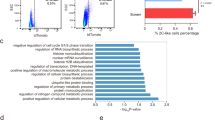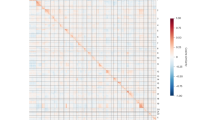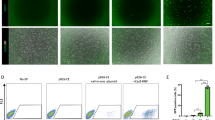Abstract
Studying the early function of essential genes is an important and challenging problem in developmental biology. Here, we established a method for rapidly inducing CRISPR-Cas9-mediated mutations in one blastomere of two-cell stage embryos, termed 2-cell embryo-CRISPR-Cas9 injection (2CC), to study the in vivo function of essential (or unknown) genes in founder chimeric mice. By injecting both Cre mRNA and CRISPR-Cas9 targeting the gene of interest into fluorescent reporter mice, the 2CC method can trace both wild-type and mutant cells at different developmental stages, offering internal control for phenotypic analyses of mutant cells. Using this method, we identified novel functions of the essential gene Tet3 in regulating excitatory and inhibitory synaptic transmission in the developing mouse cerebral cortex. By generating chimeric mutant mice, the 2CC method allows for the rapid screening of gene function in multiple tissues and cell types in founder chimeric mice, significantly expanding the current armamentarium of genetic tools.
Similar content being viewed by others
Log in or create a free account to read this content
Gain free access to this article, as well as selected content from this journal and more on nature.com
or
References
Griffiths AJF . An introduction to genetic analysis. 7th Edition. New York: WH Freeman, 2000.
Capecchi MR . Altering the genome by homologous recombination. Science 1989; 244:1288–1292.
Nagy A . Manipulating the mouse embryo: a laboratory manual. 3rd Edition. Cold Spring Harbor: Cold Spring Harbor Laboratory Press, 2003.
Luo H, Lin Y, Gao F, Zhang CT, Zhang R . DEG 10, an update of the database of essential genes that includes both protein-coding genes and noncoding genomic elements. Nucleic Acids Res 2014; 42:D574–D580.
Picciotto MR, Wickman K . Using knockout and transgenic mice to study neurophysiology and behavior. Physiol Rev 1998; 78:1131–1163.
Lakso M, Sauer B, Mosinger B Jr, et al. Targeted oncogene activation by site-specific recombination in transgenic mice. Proc Natl Acad Sci USA 1992; 89:6232–6236.
Ryding AD, Sharp MG, Mullins JJ . Conditional transgenic technologies. J Endocrinol 2001; 171:1–14.
Nagy A, Mar L, Watts G . Creation and use of a cre recombinase transgenic database. Methods Mol Biol 2009; 530:365–378.
Cong L, Ran FA, Cox D, et al. Multiplex genome engineering using CRISPR/Cas systems. Science 2013; 339:819–823.
Wang H, Yang H, Shivalila CS, et al. One-step generation of mice carrying mutations in multiple genes by CRISPR/Cas-mediated genome engineering. Cell 2013; 153:910–918.
Friedland AE, Tzur YB, Esvelt KM, Colaiacovo MP, Church GM, Calarco JA . Heritable genome editing in C. elegans via a CRISPR-Cas9 system. Nat Methods 2013; 10:741–743.
Mali P, Yang L, Esvelt KM, et al. RNA-guided human genome engineering via Cas9. Science 2013; 339:823–826.
Li D, Qiu Z, Shao Y, et al. Heritable gene targeting in the mouse and rat using a CRISPR-Cas system. Nat Biotechnol 2013; 31:681–683.
Niu Y, Shen B, Cui Y, et al. Generation of gene-modified cynomolgus monkey via Cas9/RNA-mediated gene targeting in one-cell embryos. Cell 2014; 156:836–843.
Doudna JA, Charpentier E . Genome editing. The new frontier of genome engineering with CRISPR-Cas9. Science 2014; 346: 1258096.
Hsu PD, Lander ES, Zhang F . Development and applications of CRISPR-Cas9 for genome engineering. Cell 2014; 157:1262–1278.
Li W, Teng F, Li T, Zhou Q . Simultaneous generation and germline transmission of multiple gene mutations in rat using CRISPR-Cas systems. Nat Biotechnol 2013; 31:684–686.
Edwards RG, Beard HK . Oocyte polarity and cell determination in early mammalian embryos. Mol Hum Reprod 1997; 3:863–905.
Tan L, Shi YG . Tet family proteins and 5-hydroxymethylcytosine in development and disease. Development 2012; 139:1895–1902.
Santiago M, Antunes C, Guedes M, Sousa N, Marques CJ . TET enzymes and DNA hydroxymethylation in neural development and function — how critical are they? Genomics 2014; 104:334–340.
Gu TP, Guo F, Yang H, et al. The role of Tet3 DNA dioxygenase in epigenetic reprogramming by oocytes. Nature 2011; 477:606–610.
Muzumdar MD, Tasic B, Miyamichi K, Li L, Luo L . A global double-fluorescent Cre reporter mouse. Genesis 2007; 45:593–605.
Fujimori T, Kurotaki Y, Miyazaki J, Nabeshima Y . Analysis of cell lineage in two- and four-cell mouse embryos. Development 2003; 130:5113–5122.
Piotrowska K, Wianny F, Pedersen RA, Zernicka-Goetz M . Blastomeres arising from the first cleavage division have distinguishable fates in normal mouse development. Development 2001; 128:3739–3748.
Hashimoto M, Yamashita Y, Takemoto T . Electroporation of Cas9 protein/sgRNA into early pronuclear zygotes generates non-mosaic mutants in the mouse. Dev Biol 2016; 418:1–9.
Li T, Yang D, Li J, Tang Y, Yang J, Le W . Critical role of Tet3 in neural progenitor cell maintenance and terminal differentiation. Mol Neurobiol 2015; 51:142–154.
Yen ST, Zhang M, Deng JM, et al. Somatic mosaicism and allele complexity induced by CRISPR/Cas9 RNA injections in mouse zygotes. Dev Biol 2014; 393:3–9.
Molkentin JD, Lin Q, Duncan SA, Olson EN . Requirement of the transcription factor GATA4 for heart tube formation and ventral morphogenesis. Genes Dev 1997; 11:1061–1072.
Kuo CT, Morrisey EE, Anandappa R, et al. GATA4 transcription factor is required for ventral morphogenesis and heart tube formation. Genes Dev 1997; 11:1048–1060.
Yu H, Su Y, Shin J, et al. Tet3 regulates synaptic transmission and homeostatic plasticity via DNA oxidation and repair. Nat Neurosci 2015; 18:836–843.
Zhu X, Girardo D, Govek EE, et al. Role of Tet1/3 genes and chromatin remodeling genes in cerebellar circuit formation. Neuron 2016; 89:100–112.
Shen TJ, Ji F, Jiao JW . Epigenetics: major regulators of embryonic neurogenesis. Sci Bull 2015; 60:1734–1743.
Madisen L, Zwingman TA, Sunkin SM, et al. A robust and high-throughput Cre reporting and characterization system for the whole mouse brain. Nat Neurosci 2010; 13:133–140.
Hashimoto M, Yamashita Y, Takemoto T . Electroporation of Cas9 protein/sgRNA into early pronuclear zygotes generates non-mosaic mutants in the mouse. Dev Biol 2016; 418:1–9.
Micheva KD, Beaulieu C . Quantitative aspects of synaptogenesis in the rat barrel field cortex with special reference to GABA circuitry. J Comp Neurol 1996; 373:340–354.
Swiech L, Heidenreich M, Banerjee A, et al. In vivo interrogation of gene function in the mammalian brain using CRISPR-Cas9. Nat Biotechnol 2015; 33:102–106.
Platt RJ, Chen S, Zhou Y, et al. CRISPR-Cas9 knockin mice for genome editing and cancer modeling. Cell 2014; 159:440–455.
Incontro S, Asensio CS, Edwards RH, Nicoll RA . Efficient, complete deletion of synaptic proteins using CRISPR. Neuron 2014; 83:1051–1057.
Straub C, Granger AJ, Saulnier JL, Sabatini BL . CRISPR/Cas9-mediated gene knock-down in post-mitotic neurons. PLoS One 2014; 9:e105584.
Mikuni T, Nishiyama J, Sun Y, Kamasawa N, Yasuda R . High-throughput, high-resolution mapping of protein localization in mammalian brain by in vivo genome editing. Cell 2016; 165:1803–1817.
Tsai SQ, Joung JK . Defining and improving the genome-wide specificities of CRISPR-Cas9 nucleases. Nat Rev Genet 2016; 17:300–312.
Ying QL, Wray J, Nichols J, et al. The ground state of embryonic stem cell self-renewal. Nature 2008; 453:519–523.
He YF, Li BZ, Li Z, et al. Tet-mediated formation of 5-carboxylcytosine and its excision by TDG in mammalian DNA. Science 2011; 333:1303–1307.
Zheng JJ, Li SJ, Zhang XD, et al. Oxytocin mediates early experience-dependent cross-modal plasticity in the sensory cortices. Nat Neurosci 2014; 17:391–399.
Acknowledgements
We thank Yi Zeng (Shanghai Institute of Biochemistry and Cell Biology) for kindly providing mT/mG mice. This study was supported by the Ministry of Science and Technology of China (2014CB964803 and 2015AA020307 to JL), the National Natural Science Foundation of China (31530048 and 81672117 to JL, 31530030 to XY and 31601163 to KW), the Chinese Academy of Sciences (XDB19010204 to JL and XDB02010000 to XY), Shanghai Municipal Commission for Science and Technology (16JC1420500 to JL) and China Postdoctoral Science Foundation (2016M601661 to KW).
Author information
Authors and Affiliations
Corresponding authors
Additional information
( Supplementary information is linked to the online version of the paper on the Cell Research website.)
Supplementary information
Supplementary information, Table S1
In vitro and in vivo Development of Two-cell Embryos after Injection of Cre mRNA into One Blastomere*. (PDF 107 kb)
Supplementary information, Table S2
CRISPR-Cas9-Mediated Tet1 or Tet3 Targeting in One Blastomere of Two-cell Embryos*. (PDF 115 kb)
Supplementary information, Table S3
Multiple sgRNAs Mediated Tet3, Tyr or Gata4 Targeting in One Blastomere of Two-cell Stage Embryos*. (PDF 120 kb)
Supplementary information, Table S4
Off-target Analysis in Chimeric Mice Carrying Tet3 Mutation Generated Using Multiple sgRNAs. (PDF 133 kb)
Supplementary information, Figure S1
Chimerism Analysis of Embryos and Mice Derived after Cre mRNA Injection into One Blastomere of Two-cell Stage Embryos. (PDF 3662 kb)
Supplementary information, Figure S2
Analysis of Tet1 or Tet3 Targeted mT+/mG+ ESC Lines and Mice. (PDF 2411 kb)
Supplementary information, Figure S3
Multiple sgRNAs Mediated Tyr or Gata4 Targeting. (PDF 5130 kb)
Supplementary information, Figure S4
CRISPR-Cas9-mediated Tet3 Targeting Using the Ai9 Reporter Line. (PDF 1141 kb)
Supplementary information, Figure S5
Whole-cell Recordings from the Somatosensory Cortex of Chimeric Ai9 mice. (PDF 387 kb)
Supplementary information, Figure S6
Gene Expression And Local Methylation Analysis of Candidate Target Genes in Tet3 Mutant Chimeric Mice. (PDF 884 kb)
Supplementary information, Data S1
Supplemental experimental procedures (PDF 133 kb)
Rights and permissions
About this article
Cite this article
Wang, L., Li, MY., Qu, C. et al. CRISPR-Cas9-mediated genome editing in one blastomere of two-cell embryos reveals a novel Tet3 function in regulating neocortical development. Cell Res 27, 815–829 (2017). https://doi.org/10.1038/cr.2017.58
Received:
Revised:
Accepted:
Published:
Issue date:
DOI: https://doi.org/10.1038/cr.2017.58
Keywords
This article is cited by
-
Homozygous deleterious variants in MYCBPAP induce asthenoteratozoospermia involving abnormal acrosome biogenesis, manchette structure and sperm tail assembly in humans and mice
Science China Life Sciences (2025)
-
Adenine base editors induce off-target structure variations in mouse embryos and primary human T cells
Genome Biology (2024)
-
Human embryonic genetic mosaicism and its effects on development and disease
Nature Reviews Genetics (2024)
-
Dnali1 is required for sperm motility and male fertility in mice
Basic and Clinical Andrology (2023)
-
Tet Enzyme-Mediated Response in Environmental Stress and Stress-Related Psychiatric Diseases
Molecular Neurobiology (2023)



